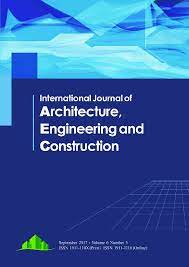Investigation of the Performance of Rice Husk Ash In M20-Grade Concrete
DOI:
https://doi.org/10.8845/c7s1hc49Abstract
The main cause of environmental degradation in the world today is global warming caused by the release of carbon dioxide into the atmosphere. Most of these CO2 emissions come from vehicle use. The large cement industry in almost every country in the world produces a lot of carbon dioxide, making it the second largest source of environmental pollution due to the production of fine silicate cement products. Therefore, other materials are being introduced to replace ordinary Portland cement in concrete making. Rice husk ash has pozzolanic properties and was used as an additive in cement and its properties were examined. This study investigates the performance of residual rice flour (RHA) on M20-grade concrete. Variable levels of 0% {control}, 5%, 10%, 15%, and 20% of RHA were rigorously studied concerning the Indian standard model for composite samples. M20 grade concrete measuring 150mm x 150mm x 15mm was poured by replacing the cement with RHA. As a control, cubes were cured at room temperature for 7 and 28 days. Strength (compression, flexural, and splitting tensile), and performance (water tightness rate and duration) tests were carried out. Test results have shown that the performance and strength of RHA {replacement} is slightly better than regular concrete and meets the limits set and accepted by the standard. Based on the results of the research experiment, some important conclusions were drawn.


